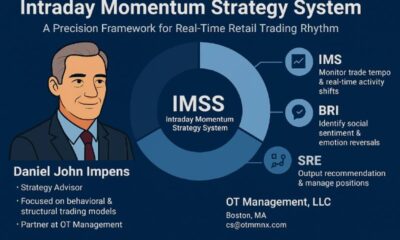Tech
Revolutionizing Cybersecurity: How Artificial Intelligence (AI) and Machine Learning Are Combatting Advanced Threats

The rapid evolution of technology has brought about significant advancements in various sectors, including cybersecurity. As the number and sophistication of cyber threats continue to rise, traditional security measures are no longer sufficient to protect against these advanced attacks. To address this challenge, artificial intelligence (AI) and machine learning (ML) have emerged as essential tools for combating sophisticated cyber threats. This article explores how AI and ML are revolutionizing cybersecurity and helping organizations stay one step ahead of cybercriminals. According to a report by Cybersecurity Ventures, global cybercrime damages will reach $10.5 trillion annually by 2025, up from $3 trillion in 2015. The increasing complexity of cyber-attacks demands innovative solutions that can quickly adapt and respond to new threats. Enter AI and ML – two powerful technologies with the potential to transform cybersecurity. By analyzing vast amounts of data at unprecedented speeds, these technologies enable real-time threat detection and automated response systems, providing an additional layer of protection beyond conventional signature-based methods. One key area where AI and ML excel is identifying previously unknown or zero-day vulnerabilities. Traditional antivirus software relies on known signatures of malware to detect and block threats. However, when faced with novel attack techniques, these tools often fall short. In contrast, AI and ML algorithms can identify patterns and anomalies within network traffic and user behavior, allowing them to spot suspicious activities even if they haven’t been encountered before. For instance, Darktrace, a UK-based cybersecurity firm, uses AI to analyze networks’ “pattern of life” and detect deviations indicative of a cyber threat.
Another critical application of AI and ML in cybersecurity lies in predictive analytics. These technologies can analyze historical data on past attacks, learn from them, and generate predictions about future threats. This capability enables proactive security measures, such as preemptively patching vulnerable systems or blocking potentially harmful connections. Moreover, ML models can continuously update themselves based on emerging trends, further enhancing their accuracy over time. Adaptability is another strength of AI and ML-powered cybersecurity solutions. Unlike rule-based systems that require manual updates and configuration changes, AI and ML systems can automatically adjust their parameters according to evolving threat landscapes. For example, Cynerio, an Israeli healthcare cybersecurity company, employs ML algorithms to dynamically adapt to each hospital’s unique environment, ensuring optimal protection without burdening IT staff with constant fine-tuning tasks.
In addition to improving threat detection and prevention, AI and ML also enhance incident response capabilities. Automated response systems can rapidly isolate infected devices, quarantine compromised files, and remediate damage caused by cyber-attacks. Furthermore, these technologies can assist human analysts in triaging alerts, prioritizing high-risk incidents, and conducting root cause analyses. According to a Capgemini Research Institute report, 64% of organizations using AI and ML in their cybersecurity operations experienced faster threat containment times than those relying solely on humans. Despite their numerous benefits, AI and ML-driven cybersecurity solutions are not without challenges. One major concern is false positives – incorrectly flagging harmless activities as threats. High rates of false positives can lead to alert fatigue among security teams, causing them to overlook genuine dangers. Addressing this issue requires continuous refinement of AI and ML algorithms, as well as integrating contextual information into decision-making processes. Another challenge is adversarial attacks, wherein cybercriminals deliberately manipulate input data to mislead AI and ML models. Such tactics could render these systems less effective or even compromise overall system security. Mitigating this risk involves employing robust model validation techniques, regularly testing for weaknesses, and incorporating multiple layers of defense mechanisms. Lastly, ethical considerations surrounding AI and ML usage must be addressed. Issues related to privacy, bias, transparency, and accountability need careful consideration to ensure responsible implementation of these technologies in cybersecurity. Collaboration between industry stakeholders, policymakers, and researchers is crucial for establishing best practices and guidelines that balance innovation with ethical responsibility.
As cyber threats become increasingly complex, AI and ML offer promising avenues for strengthening cybersecurity defenses. Through real-time threat detection, predictive analytics, adaptable responses, and enhanced incident management, these technologies hold immense potential in combatting advanced cyber threats. While challenges remain, continued investment in research and development, coupled with thoughtful governance frameworks, will help unlock their full potential while mitigating risks associated with their use.
Shanu Khare
Assistant Professor
Chandigarh University
-

 Sports4 weeks ago
Sports4 weeks agoFIFA Club World Cup 2025: Complete List of Qualified Teams and Groups
-

 Sports3 weeks ago
Sports3 weeks agoAl Ahly vs Inter Miami, 2025 FIFA Club World Cup – Preview, Prediction, Predicted Lineups and How to Watch
-
Health1 week ago
Back to Roots: Ayurveda Offers Natural Cure for Common Hair Woes
-

 Tech2 weeks ago
Tech2 weeks agoFrom Soil to Silicon: The Rise of Agriculture AI and Drone Innovations in 2025
-

 Sports3 weeks ago
Sports3 weeks agoFIVB Men’s Volleyball Nations League 2025: Full Schedule, Fixtures, Format, Teams, Pools and How to Watch
-

 Startup3 weeks ago
Startup3 weeks agoHow Instagram Is Driving Global Social Media Marketing Trends
-

 Television4 weeks ago
Television4 weeks agoTribeca Festival 2025: Date, Time, Lineups, Performances, Tickets and How to Watch
-

 Sports3 weeks ago
Sports3 weeks agoWorld Judo Championships 2025: Full Schedule, Date, Time, Key Athletes and How to Watch



















